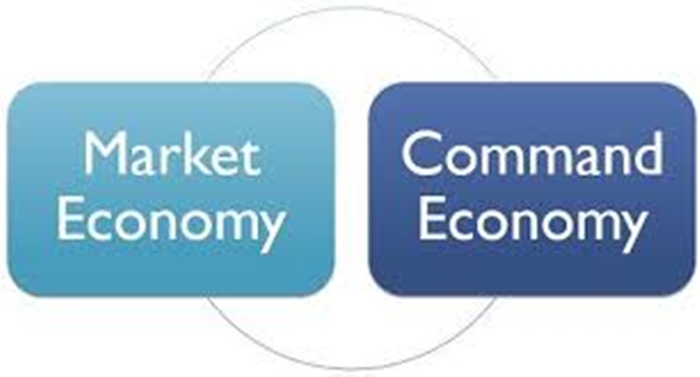In this article, we discussed the difference between market system and command system, we started by defining their meanings and their advantages.
Definition
A market system is a network of buyers, sellers, and other participants that trade goods and services. It’s a complex web of people, rules, and supporting functions that determine how goods and services are produced, accessed, and exchanged.
A market system (or market ecosystem) is any systematic process enabling many market players to offer and demand: helping buyers and sellers interact and make deals.
A command system, also known as a command economy or planned economy, is an economic system where the government controls the production, distribution, and consumption of goods and services
The difference between market economy and command economy are:
A market economy is an economic setting in which free flow of goods and services takes place, on the basis of their demand and supply. More, the resources are owned and controlled by private individuals and businesses.
While economy is said to be command economy in which the government owns and controls the factors of production and also decides the distribution of output.
Producers and consumers regulate a market economy.
However, it is the government which governs a command economy.
The price device is used in the market economy and not in a command economy, as the prices as set by the state. Hence the price level in a command economy is low,
whereas in a market economy it is high.
In a market economy land and other resources, i.e. capital, labor, material etc. are privately owned, but the same is publicly owned in case of a command economy.
The rate of economic growth is high in the market economy, as compared to the command economy, which can be seen in their standard of living.
When it comes to income distribution, in a market economy, there is an unequal distribution of income while the command economy has an equal distribution of income.
In a market economy, the main objective behind the production of goods is profit, whereas, in a command economy, the primary objective of production is the welfare of society.
In a market economy, the consumers and business houses play an important role in production decision. In contrast, in a command economy, it is the government which decides what is to be produced as per the plan which depends on the calculated needs of the people.
In a market economy, the consumer and factor markets decide the allocation of resources. On the contrary, central planners state the resource allocation in a command economy.
In a market economy, workers are free to choose work for themselves and use the resources and capabilities. As against, in a command economy, the workers cannot freely choose their work or switch jobs. It is the government who decides the wages to attain income equality.
In a market economy, people work to ensure their economic security in terms of retirement, healthcare, housing, clothing, etc. On the contrary, the government assures economic security to the people, in a command economy.
Advantages of a Market Economy
In a market economy, prices are set by the decisions of consumers and producers, each acting in their self-interest. The profit motive and competition between businesses provide an encouragement for producers to deliver the most desirable, cost-effective products at the best price.
Advantages of a Command Economy
A command economy allows the government to mobilize a nation’s resources to accomplish social goals that would be difficult for market factors to resolve alone. In times of war or crisis, may governments may resort to elements of a command economy, such as rationing or price controls, to maintain social stability. For example, during the COVID-19 pandemic, the U.S. government ordered pharmaceutical companies to begin mass production of Covid tests and vaccines, in a volume that was unobtainable for purely market-driven actors.
Conclusion
The primary differences between a market economy and a command economy include resource control, capital ownership, and price determination for goods and services. A market economy is commonly equated to capitalism, highlighting private ownership and the forces of supply and demand. In a command economy, governments own the factors of production, control resources, and set prices. Every economic setting aims at satisfying the needs and wants of its people by efficiently using its scarce resources.


